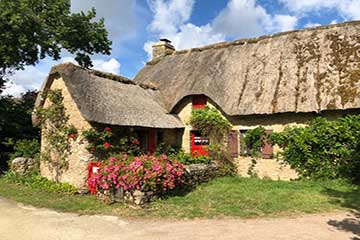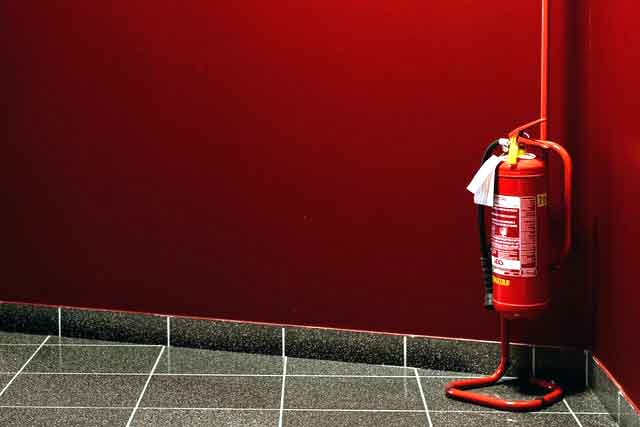What can You do to a Grade 2 Listed Building?
When comes to a Grade II listed building, you’re faced with a decision: do you accept the added responsibility of conserving a small piece of history, or do you reject the acquisition because making the alterations you want may be more difficult?
Adaptations, alterations and renovations to turn a Grade II listed building into your perfect property are governed by legal restrictions – which can often be numerous, complex and slow-moving.
Fortunately, it is feasible to make changes to listed houses, but you will always need written permission from your local authorities.
If your property is classed as Grade II, it indicates it has significant historic and/or architectural significance and is subject to restrictions that maintain its unique character. Your Grade II property may be an architectural marvel, of unique historical significance, or situated in a region of historical interest; as a result, it requires a little extra attention to ensure that it is conserved properly.
This class includes 91.7% of all listed buildings, so it is very likely that your house belongs in this group. Fortunately, there are many fewer restrictions than there would be for a Grade I listed site.
It may appear weird to require permission to make changes to your own home, but this heritage protection is intended to ensure that our built environment, including your dream home, retain their unique character.
Before making substantial alterations to listed properties, local authorities must always be consulted. If consent is granted, owners must pay a listed building consent fee, which varies depending on the size of the project.
If you chose to resist your local authorities and begin work without permission, you may be issued a listed building enforcement notice. This permits authorities to reverse or mitigate the effects of any changes that have been made – but it will also come at a high cost to you.
Not only will you have to pay to have the building work reversed, but you may also face maximum fines and time in prison. Don’t rely on applying for retrospective consent, either; while it is feasible and occasionally granted, if it is denied, you will be penalised for the unlawful work you have done.
Listed building consent is required if you own a Grade I, II* or II listed building and wish to make significant material changes to the property. Some of these changes are:
- Listed Building Repairs
Repairs to listed buildings may require permission if the work is thought to be detrimental to the building’s character. A repair completed with like-for-like materials is frequently exempt from approval. However, this is not always the case, and it is preferable to get assistance from local authorities.
Need A Free Estimate?
- Fully qualified RICS professional surveyor
- Affordable, fast and thorough surveys
- Clear, precise and easy to understand report
- Internal alterations
Because the listed building status applies to the entire structure, internal renovations and works require planning permission as well. This is true not only for modifying the layout of rooms by removing a wall. It also covers (but is not limited to): Demolishing and rebuilding features; Exposing timbers and brickwork; Installing double glazing uPVC or aluminium; Removing internal features, like fireplaces and panelling.
- Windows repairs or replacement
While replacing a defective or inadequate window may appear to be solely functional, windows can have a significant impact on the aesthetic of a building.
As a result, window details, construction materials, and even ancient glass panes are frequently preserved by listed building requirements. This can make it difficult to repair draughty or deteriorating frames, bring listed structures up to modern energy efficiency standards, and obtain permission to conduct the necessary work.
In most cases, Historic England state that ‘repair is preferable to replacement’. However, by using original materials, and designs which are authentic to the original detailing, it is possible to obtain consent for window replacement. Where double-glazing is desired, it can be easier to use alternative solutions, such as secondary glazing, to achieve the same result.
- Extensions and renovations
The appeal of a listed structure is difficult to resist, but so is the urge for many homeowners to leave their imprint on a house. Making restorations and extensions to a listed building is a time-consuming procedure that requires patience, planning, and attention to detail.
It is also critical to ensure that your interests are protected during the construction process. This includes obtaining approval for all aspects of your project as well as considering the necessity for suitable and comprehensive building insurance or renovation and extension insurance in the event that something goes wrong.
Before considering an extension or renovation, consult with your local authorities and research the history of your building. Obtaining approval is rarely a quick procedure, and your proposal will require a clear plan to be granted. You can redesign your home in line with its historical character with the help of an architect, designer, and builder with experience working with historic buildings.
Can I put a new kitchen in a grade 2 listed building?
It is usually simple to replace modern fittings, plumbing, wiring, and finishes in your existing kitchen with new work. If your home is listed, you should not require permission to replace an existing kitchen, but if you are unsure, check with your local planning authority. You may also need authorization if you wish to change the size of the room or alter features or constructions that contribute to the historic character of your home.
Can you decorate a grade 2 listed building?
Regular exterior redecoration is essential for preventing degradation. This is particularly true for exterior woodwork. Windows and doors must be painted on a regular basis to protect the wood from the elements. The only exception is old hardwood like oak, which should be kept unpainted but may benefit from oiling or other traditional treatments.
External coatings – for example, lime render and stucco – may need special ‘breathable’ paint such as limewash that protects the material but does not trap moisture in the wall. In old houses, it’s important to let moisture in walls evaporate so that it doesn’t cause damp.
Interior design is largely a matter of personal preference, but there are a few factors to keep in mind. If your home is a historically significant structure, take additional care while redecorating because there may be layers of ancient paint that reflect the past of the property. There may be rare wall paintings concealed beneath newer plaster, paint, or wallpaper that should be preserved and may be worth restoring.
If you suspect your house has early wall decoration, you may need specialist advice and conservation, rather than just redecoration. Stripping paint or lime plaster can take away layers of history that can’t be replaced.
If your home is listed or in a conservation area you should seek advice before making changes as consent may be required.
Can you make changes to an existing bathroom in a grade 2 listed building?
If you merely want to replace the fixtures and remodel your current bathroom, this should be very simple. Changing modern bathroom fixtures in a listed building normally does not require permission unless you are also going to change the size of the room or do any structural work at the same time.
Installing new pipes or other equipment may have an impact on the historic fabric of the property, therefore avoid cutting into beams or removing antique timber floors and ceilings.
If you think your bathroom could be historic find out more before you alter it as you may need consent. Refurbishment should still be possible but will need extra care.
We hope that our “What can you do to a Grade II listed building” guide will help you keep you on top of things and help you with your journey of owning a listed building. If you are not sure about your options, especially when comes to extensions or home modifications, consult a professional for advice.
Written by Danil P.
13th Oct 2021 (Last updated on 17th Oct 2022)
6 minute read





